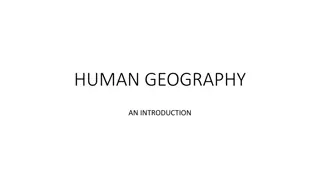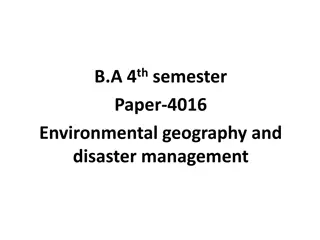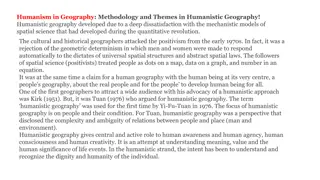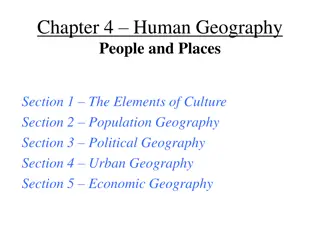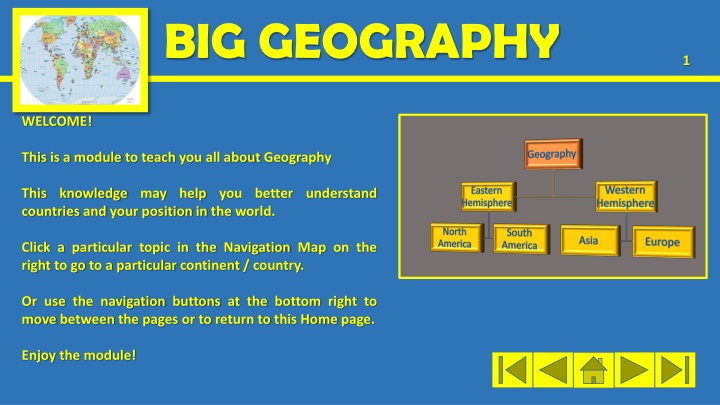
Explore Geography: Continents, Hemispheres, and Countries
Delve into the world of Geography with insightful information on the Western and Eastern Hemispheres, continents like Asia and Europe, and their significant characteristics. Learn about the geography of Earth, the distribution of landmasses, and the diverse populations that inhabit these regions.
Download Presentation

Please find below an Image/Link to download the presentation.
The content on the website is provided AS IS for your information and personal use only. It may not be sold, licensed, or shared on other websites without obtaining consent from the author. If you encounter any issues during the download, it is possible that the publisher has removed the file from their server.
You are allowed to download the files provided on this website for personal or commercial use, subject to the condition that they are used lawfully. All files are the property of their respective owners.
The content on the website is provided AS IS for your information and personal use only. It may not be sold, licensed, or shared on other websites without obtaining consent from the author.
E N D
Presentation Transcript
BIG GEOGRAPHY 1 WELCOME! Geography This is a module to teach you all about Geography Western Hemisphere Eastern Hemisphere This knowledge may help you better understand countries and your position in the world. North America South America Asia Europe Click a particular topic in the Navigation Map on the right to go to a particular continent / country. Or use the navigation buttons at the bottom right to move between the pages or to return to this Home page. Enjoy the module!
Eastern Hemisphere 2 The Eastern Hemisphere is a geographical term for the half of Earth which is east of crosses Greenwich, London, UK) and west of the antimeridian (which crosses the Pacific Ocean and relatively little land from pole to pole). It is also used to refer to Afro-Eurasia (Africa and Eurasia) and Australia, in contrast with the Western mainly North and South America. The Eastern Hemisphere may also be called the "Oriental Hemisphere". In addition, it may be used in a cultural or geopolitical sense as a synonym for the "Old World". the prime meridian (which Hemisphere, which includes Click the right arrow at the bottom right to see examples of two popular domestic pets - dogs and cats.
ASIA 3 Asia is Earth's largest and most populous continent, located primarily in the Eastern and Northern Hemispheres. It shares the continental landmass of Eurasia with the continent of Europe and the continental landmass of Afro- Eurasia with both Europe and Africa. Asia covers an area of 44,579,000 square kilometres (17,212,000 sq mi), about 30% of Earth's total land area and 8.7% of the Earth's total surface area. The continent, which has long been home to the majority of the human population,[4] was the site of many of the first civilizations. Asia is notable for not only its overall large size and population, but also dense and large settlements, as well as vast barely populated regions. Its 4.5 billion people (As of September 2018) constitute roughly 60% of the world's population Click the right arrow at the bottom right to see other continents in Eastern Hemisphere.
EUROPE 4 Europe is a continent located entirely in the Northern Hemisphere and mostly in the Eastern Hemisphere. It is bordered by the Arctic Ocean to the north, the Atlantic Ocean to the west and the Mediterranean Sea to the south. It comprises the westernmost part of Eurasia. Europe covers about 10,180,000 square kilometres (3,930,000 sq mi), or 2% of the Earth's surface (6.8% of land area). Politically, Europe is divided into about fifty sovereign states of which the Russian Federation is the largest and most populous, spanning 39% of the continent and comprising 15% of its population. Europe had a total population of about 741 million (about 11% of the world population) as of 2016.[1] The European climate is largely affected by warm Atlantic currents that temper winters and summers on much of the continent, even at latitudes along which the climate in Asia and North America is severe. Further from the sea, seasonal differences are more noticeable than close to the coast. Click the video above to watch Geography Or click the right arrow at the bottom right to find out more about the Western Hemisphere
Western Hemisphere 5 The Western Hemisphere is a geographical term[1][2] for the half of Earth which lies west of the prime meridian (which crosses Greenwich, London, United Kingdom) and east of the antimeridian. The other half is called the Eastern Hemisphere. The Western Hemisphere consists of the Americas, the western portions of Eurasia and Africa, the extreme eastern tip of Siberia (Russia), numerous territories in Oceania, and a portion of Antarctica, while excluding some of the Aleutian Islands to the southwest of the Alaskan mainland. Click the right arrow at the bottom right to see continents in the Western Hemisphere North and South Americas
North America 6 North America is a continent entirely within the Northern Hemisphere and almost all within the Western Hemisphere; it is also considered by some to be a northern subcontinent of the Americas.[3][4] It is bordered to the north by the Arctic Ocean, to the east by the Atlantic Ocean, to the west and south by the Pacific Ocean, and to the southeast by South America and the Caribbean Sea. North America covers an area of about 24,709,000 square kilometers (9,540,000 square miles), about 16.5% of the earth's land area and about 4.8% of its total surface. North America is the following Asia and Africa,[5] and the fourth by population after Asia, Africa, and Europe.[6] In 2013, its population was estimated at nearly 579 million people in 23 independent states, or about 7.5% of the world's population, if nearby islands (most notably the Caribbean) are included. third largest continent by area, Click the video above to watch an intro to North America Or click the right arrow at the bottom right to move on to information about South America.
South America 7 South America is a continent in the Western Hemisphere, mostly in the Southern Hemisphere, with a relatively small portion in the Northern Hemisphere. It may also be the Americas,[5][6] which is how it is viewed in the Spanish and Portuguese- speaking regions of the Americas. The reference to South America instead of other regions (like Latin America or the Southern Cone) has increased in the last decades due to changing geopolitical dynamics (in particular, the rise of Brazil). considered a subcontinent of This is the last page of this module, click the "Home" button to go back to the Welcome start page.







